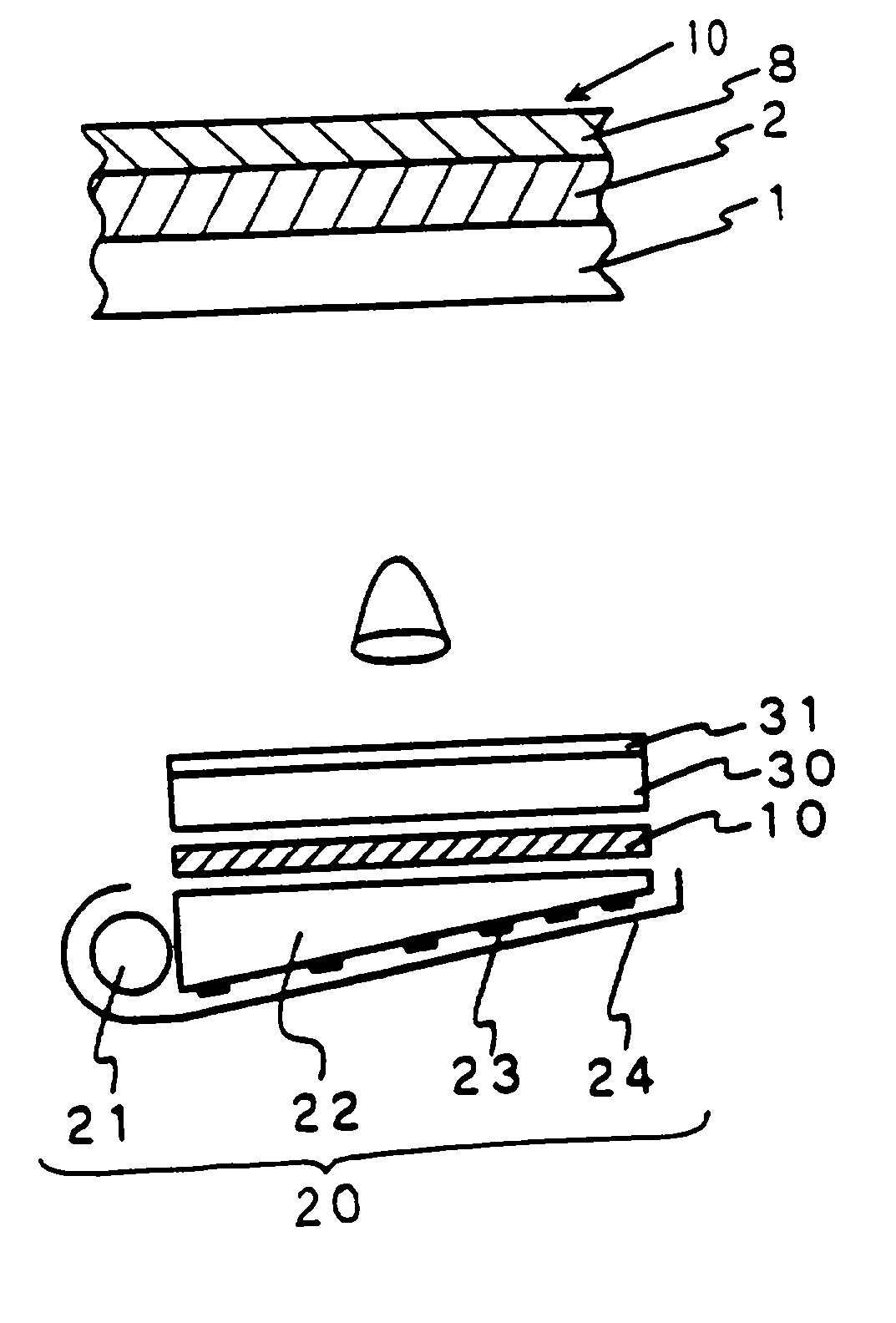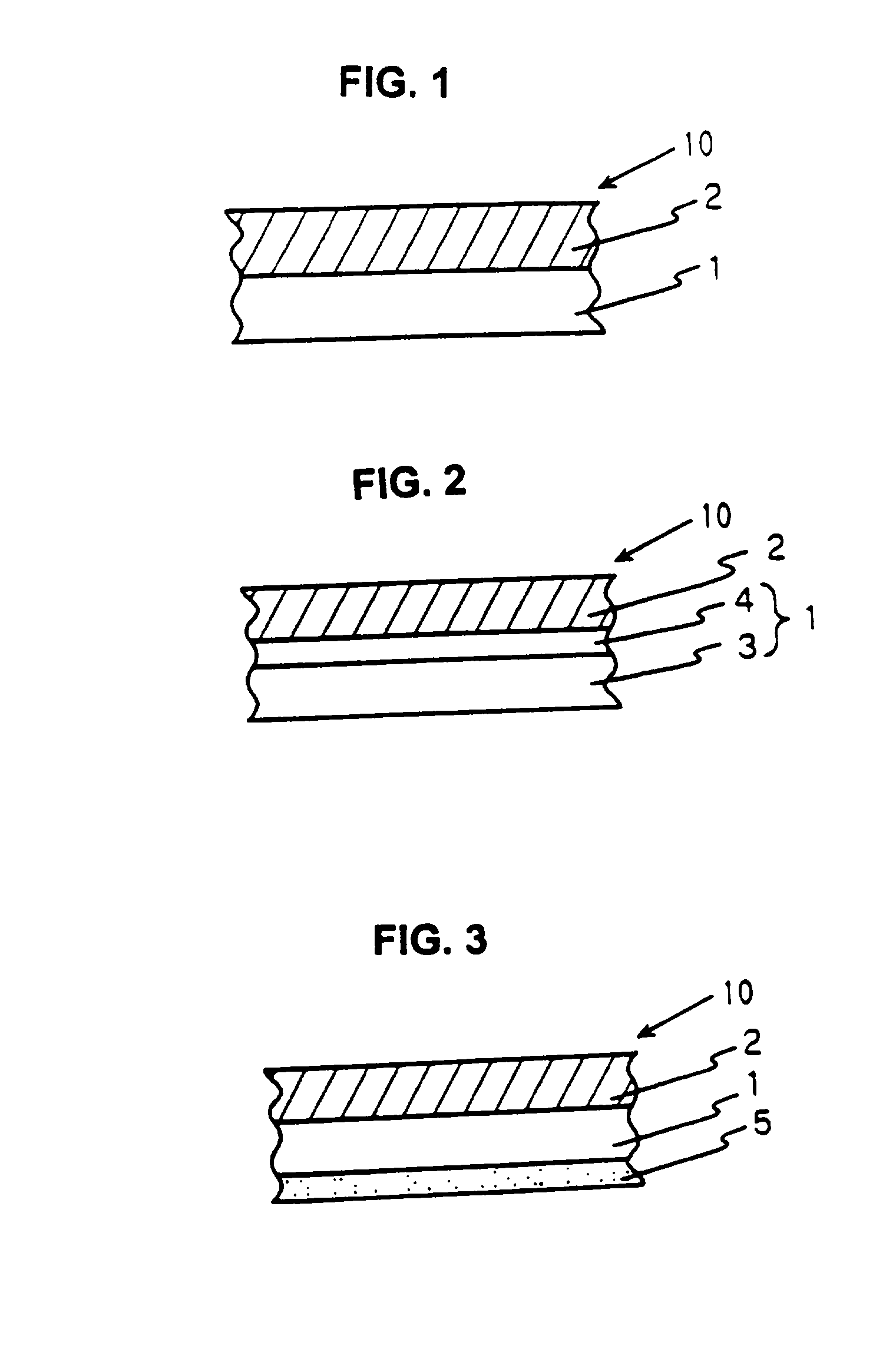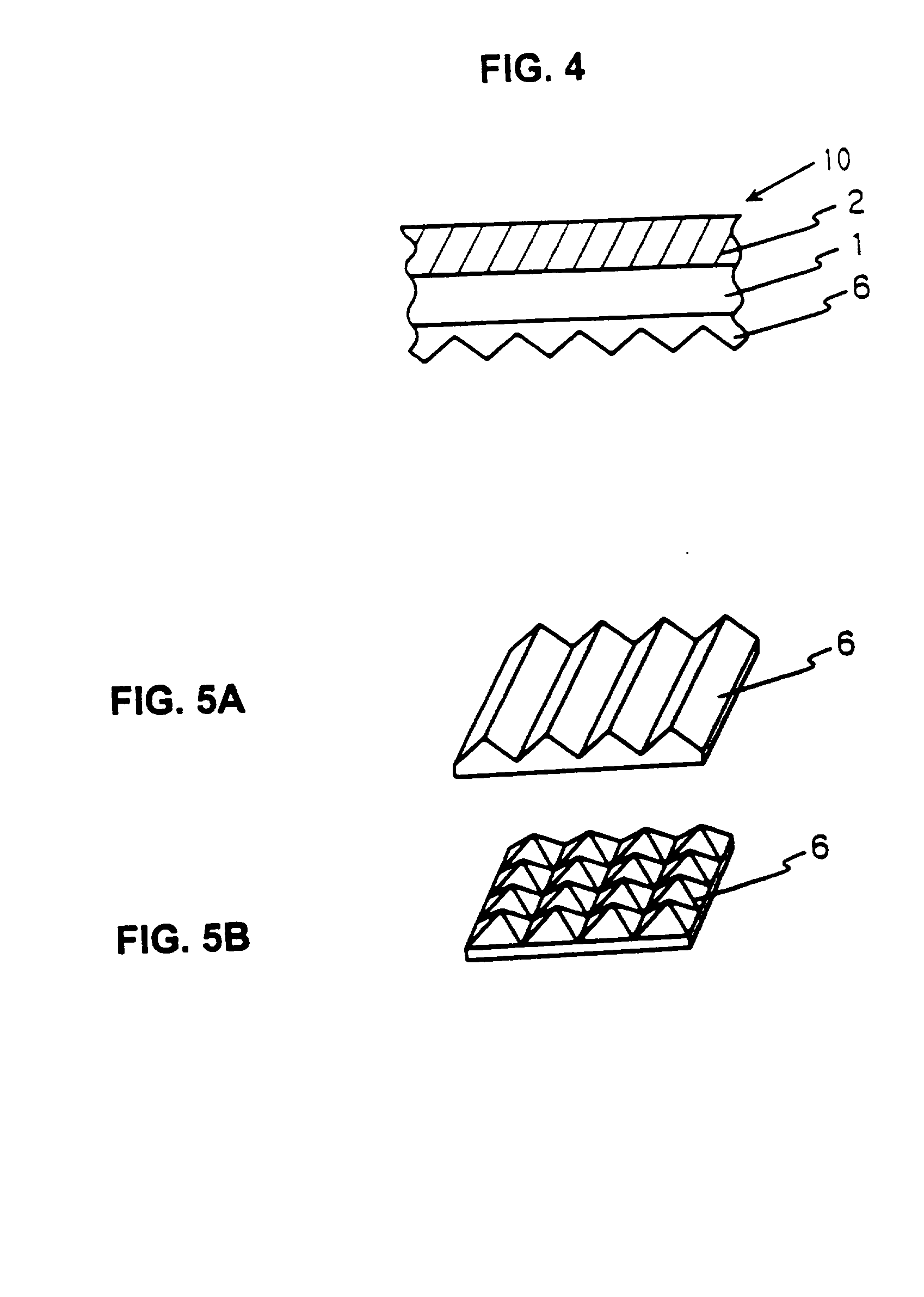Polarization light splitting film, backlight system and liquid crystal display
a technology of polarized light and backlight, applied in the field of light splitters, can solve the problems of degrading display quality, narrow viewing angle in conventional lcds, previously considered disadvantage, and recent improvement,
- Summary
- Abstract
- Description
- Claims
- Application Information
AI Technical Summary
Problems solved by technology
Method used
Image
Examples
tenth to fourteenth working examples
[0123] In these working examples, film bases having uneven surface profiles corresponding to the fifth to ninth working examples above were manufactured by a different method. The tenth to fourteen working examples respectively correspond to the fifth to ninth working examples.
[0124] In these working examples, instead of using embossment, an ultraviolet setting resin was used to form the uneven surface profiles of the film bases corresponding to the fifth to ninth working examples. A urethane resin system primer was applied on a polyethyleneterephtalate film with a thickness of 100 .mu.m and was thermally cured to form a primer layer with a thickness of 1 .mu.m on the polyethyleneterephtalate film.
[0125] An ultraviolet setting resin solution with an epoxy acrylate system as the primary component was coated on the corresponding rotating intaglio roll. Then, the composite film obtained above was pressed onto the intaglio roll with the ultraviolet setting solution and irradiated with u...
working example
FIFTEENTH WORKING EXAMPLE
[0126] A polarizing film with a thickness of 120 .mu.m (made by Sumitomo Chemical Co., Ltd., product name, "SUMILITE") was adhered on the quarter-wave layer of the second working example above (i.e., on the light emitting side). See FIG. 8B for the structure.
[0127] Evaluations
[0128] The transmissivity of polarized light, haze, and the luminance of the backlight were measured using the following methods. The results are listed in Tables 1 and 2.
[0129] (1) The polarized light transmission factor: the degree of the polarization linearity in the linearly polarized beam obtained by each of the polarization light splitting films of the above working examples first to fifteen are evaluated in terms of the polarized light transmission factor. FIG. 14 shows the device arrangement used for the measurement. An unpolarized light beam from a light source 51 is transformed into a parallel beam through a lens 52. The parallel beam is incident normally on a polarization lig...
PUM
 Login to View More
Login to View More Abstract
Description
Claims
Application Information
 Login to View More
Login to View More - R&D
- Intellectual Property
- Life Sciences
- Materials
- Tech Scout
- Unparalleled Data Quality
- Higher Quality Content
- 60% Fewer Hallucinations
Browse by: Latest US Patents, China's latest patents, Technical Efficacy Thesaurus, Application Domain, Technology Topic, Popular Technical Reports.
© 2025 PatSnap. All rights reserved.Legal|Privacy policy|Modern Slavery Act Transparency Statement|Sitemap|About US| Contact US: help@patsnap.com



